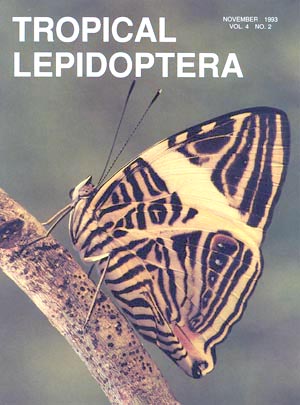<i>Danaus chrysippus </i>and its polymorphic Müllerian mimics in tropical Africa (Lepidoptera: Nymphalidae: Danainae).
Schlagworte:
Acraea, Acraeinae, Commelinaceae, Danaus, Ethiopian, genetics, Ghana, Leguminosae, mimicry, Nigeria, polymorphism Sierra Leone, Tanzania, Uganda, West AfricaAbstract
Theoretically, Müllerian mimicry, in which there is convergence of coloration between unrelated unpalatable species, should lead to uniformity in appearance, not polymorphism. Hence the discovery in Africa of polymorphic Müllerian mimics in the Danainae and Acraeinae suggested an evolutionary problem of special interest. Field and laboratory work in Uganda and Sierra Leone in 1964-72 demonstrated a statistical association between the occurrence and relative frequencies of corresponding colour forms in Danaus chrysippus and Acraea encedon which was deemed as confirmation of the Müllerian relationship between the two species. There were, however, certain anomalies which at the time could not be resolved. Later (1976), it was discovered that what had been called A. encedon is in reality two sibling species, A. encedon and a new one, named as A. encedana. The two differ in the structure of both male and female genitalia and in the coloration and the food-plants of the larvae. Some color forms are shared, others are restricted to one species only. The recognition of the additional species has enabled a re-assessment of the polymorphic Müllerian association between D. chrysippus and the two Acraea species. What emerges is that throughout tropical Africa there is a close mimetic association between D. chrysippus and A. encedana, and a much weaker (in places, non-existent) association between D. chiysippus and A. encedon. The possible origin of the mimetic and non-mimetic polymorphism in all three species is discussed in terms of hybridization of previously allopatric and monomorphic populations which have met as a consequence of recent expansions of geographical range resulting from forest clearance and thespread of savanna-like conditions.Downloads
Veröffentlicht
1993-11-01
Ausgabe
Rubrik
Articles

